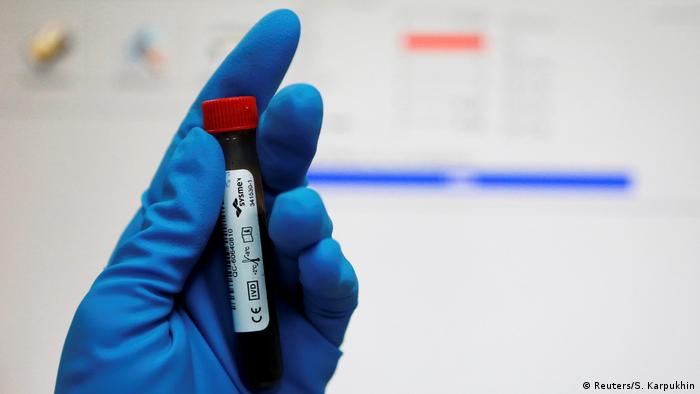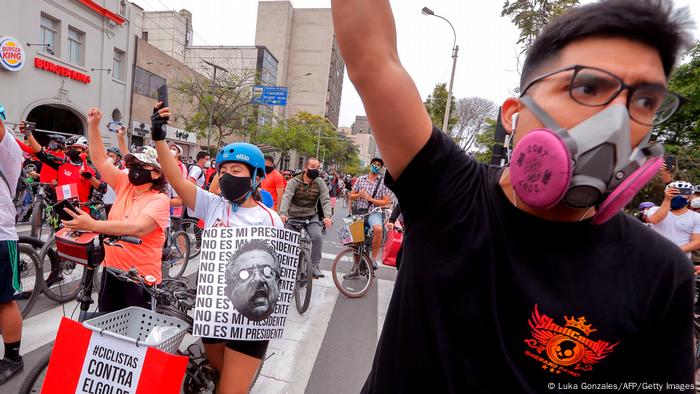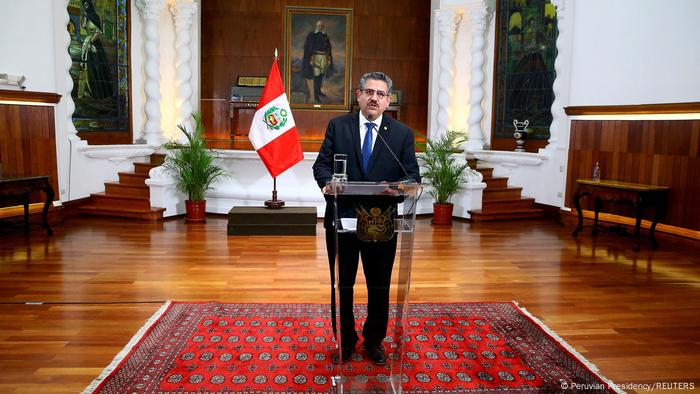BACKGROUNDER UPDATES

Ethiopia's Tigray conflict: What's behind the fighting?
Issued on: 17/11/2020 -
By:Eve IRVINE
In recent weeks, the northern Tigray region of Ethiopia has become a bloody battlefield. Nobel Peace Prize-winning Prime Minister Abiy Ahmed has launched a military offensive in the region, accusing the Tigray ruling party of trying to destabilise the democracy he wanted to build. Already, the fighting has forced more than 20,000 people to flee their homes for neighbouring Sudan. Adem Abebe, an advisor and commentator on the African Union, gives us his perspective on the situation and on the danger of it spreading beyond Ethiopia's borders and destabilising the wider region.
Ethiopia's spiraling conflict threatens regional stability
The Ethiopian government's armed conflict in semi-autonomous Tigray threatens the future of federalism in the country. With violence spilling into Eritrea, there's a potential for a security vacuum in the Horn of Africa.
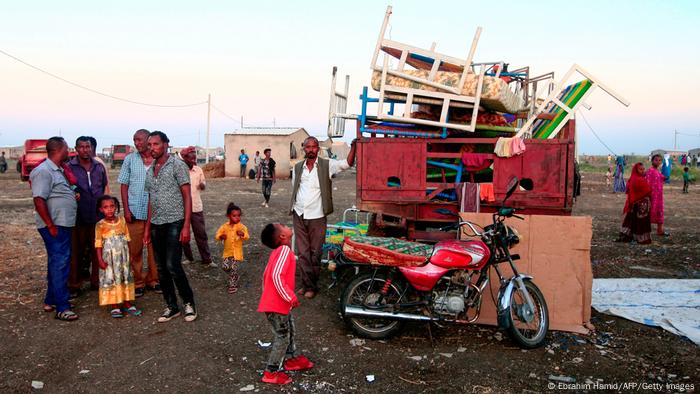
Mass forced migration to Sudan is becoming a reality due to the ongoing violence in Tigray
Deadly fighting between Ethiopian federal forces and the regional government of the Tigray People's Liberation Front (TPLF) has already claimed hundreds of military and civilian lives, according to the scarce reports coming from the region.
Internationally, there are fears that the conflict, which is quickly escalating into a civil war, will threaten regional security in the Horn of Africa.
Ethiopian Prime Minister Abiy Ahmed ordered a military operation against the TPLF on November 4, accusing the Tigray militia of attacking a government military base.
Read more: The dangers behind Ethiopia's Tigray conflict
Meanwhile, Ethiopia's defense minister, Dr Kenna Yadeta, remained bullish about the government's ability to quickly end the violence.
"All the TPLF's actions testify to their high level of frustration.They have no more strength, capability and time to intensify wars in the region. The Tigray junta has only a very short time left to be captured," according to Kenna Yadeta, who was appointed defense minister in August 2020 as part of a major — and controversial — cabinet reshuffle by Ahmed.
"We can achieve a crushing victory any day from now," Yadeta told DW.
Read more: Ethiopia: PM Abiy Ahmed reshuffles cabinet amid Tigray fighting
Refugees have been flowing into Sudan to avoid fighting in the Tigray region
Regional stability under threat
The victory may come at a severe cost to stability in the Horn of Africa, though.
To win it, there is a danger that the federal government's focus on Tigray could weaken its involvement in backing the government in Ethiopia's western neighbor, Somalia, against al-Shabab militants.
Ethiopia has already withdrawn about 600 soldiers from Somalia's western border. However they were not part of the African Union's Mission in Somalia (Amisom), which Ethiopia also supports.
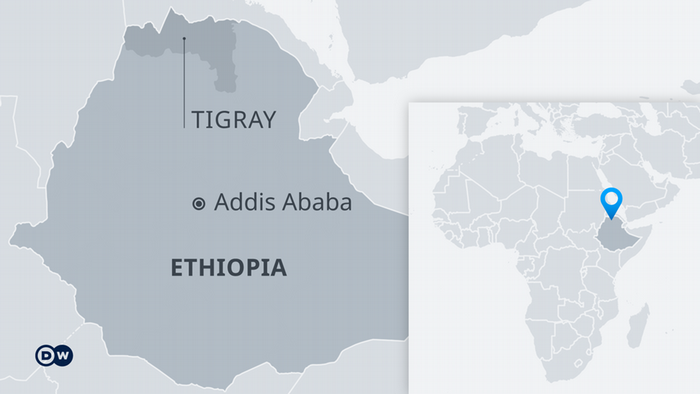
"Now, this is going to severely affect the efforts of the African Union mission that's currently involved in stabilizing Somalia and ensuring there is a functional government, and organize the elections in the next few months,” said Hassan Khannenje of the Nairobi-based think-tank the Horn Institute.
The huge numbers of refugees likely to cross the borders of an already volatile region and the likely proliferation of light weapons and small arms could lead to a "catastrophe," according to Khannenje.

Refugees have fled the fighting in Ethiopia and have descended on the Sudanese town of al-Fashqua
"If Ethiopia goes, then there goes the Horn of Africa region. And that's something they should worry everybody, both regionally and internationally," Khannenje told DW.
Read more: Ethiopia has 'entered into war' with Tigray region
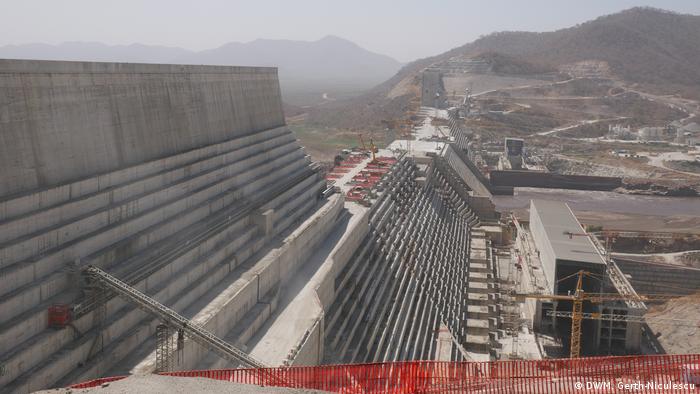
THE GRAND ETHIOPIAN RENAISSANCE DAM: A NEVER-ENDING SAGA
A concrete colossus
At 145 meters high and almost two kilometers long, the Grand Renaissance Dam is expected to become Ethiopia's biggest source of electricity. As Africa's largest hydroelectric power dam, it will produce more than 15,000 gigawatt-hours of electricity, beginning in 2022. It will source water from Africa's longest river, the Blue Nile. PHOTOS12345678
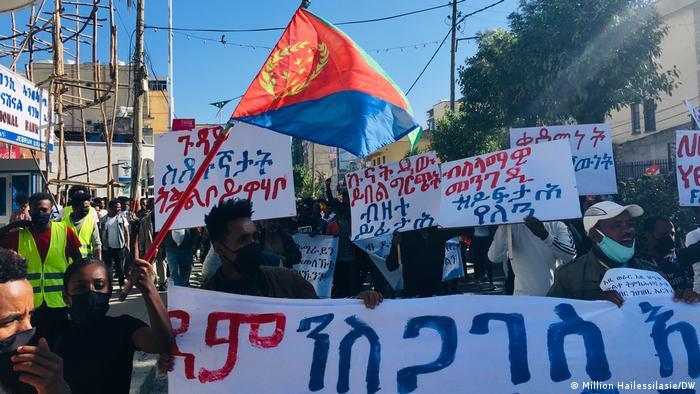
Thousands marched against a war in Ethiopia's Tigray region
'No more brother wars'
But many Eritreans want peace between Eritrea and Ethiopia.
Over the weekend, hundreds of Eritrean refugees in the Tigray city of Mekelle protested against the war between Tigrayan and Ethiopian government forces.
They demanded both sides end the conflict immediately and strike up dialogue.
The demonstrators also demanded a solution for the growing refugee crisis, saying military violence threatened refugee camps in western Tigray.
"The war is unnecessary. We know war. It's destructive. War between brothers is the worst. People have been persecuted and killed. The Eritreans here are against the war. It's enough!" said one male demonstrator.
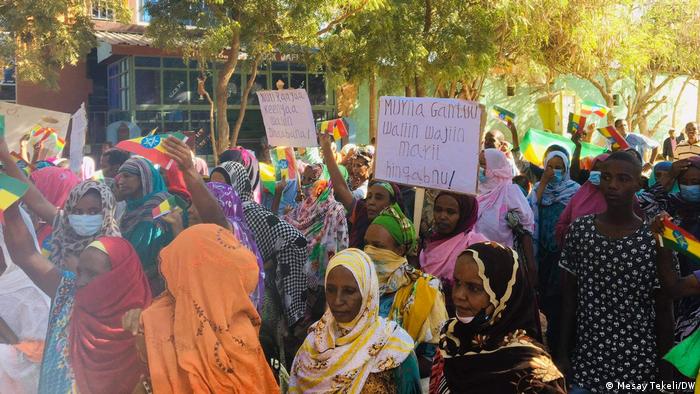
Protests against the war have started in Tigray
"It's very sad that people speaking the same language and sharing the same language are fighting," another protester told DW on condition of anonymity.
Others fear Eritreans living in Tigray could also become targets.
"Since we've been in Ethiopia, especially Tigray, we have found shelter and live like every other citizen," a protestor told DW. "This war doesn't just affect civilian life, it also affects us, the refugees."
Regional rivals launch military exercise
Perhaps worryingly from an Ethiopian perspective, and further complicating matters, regional rivals Sudan and Egypt started joint military exercises over the weekend.
Both countries are in dispute with Ethiopia, over its Grand Renaissance Dam on the Blue Nile.
Sudan and Egypt both claim the structure will adversely affect their water supply.
The exercises include planning and running combat activities, as well as commando groups conducting search and rescue missions, according to an Egyptian defense ministry statement.
The Ethiopian government's armed conflict in semi-autonomous Tigray threatens the future of federalism in the country. With violence spilling into Eritrea, there's a potential for a security vacuum in the Horn of Africa.

Mass forced migration to Sudan is becoming a reality due to the ongoing violence in Tigray
Deadly fighting between Ethiopian federal forces and the regional government of the Tigray People's Liberation Front (TPLF) has already claimed hundreds of military and civilian lives, according to the scarce reports coming from the region.
Internationally, there are fears that the conflict, which is quickly escalating into a civil war, will threaten regional security in the Horn of Africa.
Ethiopian Prime Minister Abiy Ahmed ordered a military operation against the TPLF on November 4, accusing the Tigray militia of attacking a government military base.
Read more: The dangers behind Ethiopia's Tigray conflict
Meanwhile, Ethiopia's defense minister, Dr Kenna Yadeta, remained bullish about the government's ability to quickly end the violence.
"All the TPLF's actions testify to their high level of frustration.They have no more strength, capability and time to intensify wars in the region. The Tigray junta has only a very short time left to be captured," according to Kenna Yadeta, who was appointed defense minister in August 2020 as part of a major — and controversial — cabinet reshuffle by Ahmed.
"We can achieve a crushing victory any day from now," Yadeta told DW.
Read more: Ethiopia: PM Abiy Ahmed reshuffles cabinet amid Tigray fighting
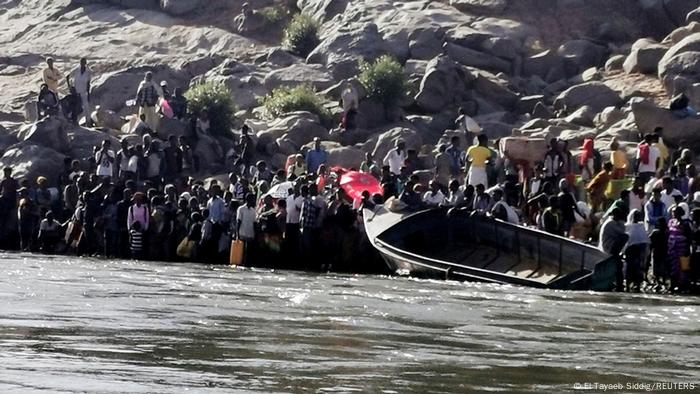 |
Refugees have been flowing into Sudan to avoid fighting in the Tigray region
Regional stability under threat
The victory may come at a severe cost to stability in the Horn of Africa, though.
To win it, there is a danger that the federal government's focus on Tigray could weaken its involvement in backing the government in Ethiopia's western neighbor, Somalia, against al-Shabab militants.
Ethiopia has already withdrawn about 600 soldiers from Somalia's western border. However they were not part of the African Union's Mission in Somalia (Amisom), which Ethiopia also supports.

"Now, this is going to severely affect the efforts of the African Union mission that's currently involved in stabilizing Somalia and ensuring there is a functional government, and organize the elections in the next few months,” said Hassan Khannenje of the Nairobi-based think-tank the Horn Institute.
The huge numbers of refugees likely to cross the borders of an already volatile region and the likely proliferation of light weapons and small arms could lead to a "catastrophe," according to Khannenje.

Refugees have fled the fighting in Ethiopia and have descended on the Sudanese town of al-Fashqua
"If Ethiopia goes, then there goes the Horn of Africa region. And that's something they should worry everybody, both regionally and internationally," Khannenje told DW.
Read more: Ethiopia has 'entered into war' with Tigray region

THE GRAND ETHIOPIAN RENAISSANCE DAM: A NEVER-ENDING SAGA
A concrete colossus
At 145 meters high and almost two kilometers long, the Grand Renaissance Dam is expected to become Ethiopia's biggest source of electricity. As Africa's largest hydroelectric power dam, it will produce more than 15,000 gigawatt-hours of electricity, beginning in 2022. It will source water from Africa's longest river, the Blue Nile. PHOTOS12345678
Conflict spills over into Eritrea
Also complicating the Ethiopian government's conflict with the TPLF is the involvement of Ethiopia's northern neighbor, Eritrea, which borders Tigray.
Over the weekend, multiple rockets — fired from Ethiopia's Tigray region — hit the Eritrean capital, Asmara.
The TPLF's leader, Debretsion Gebremichael, said his troops fought Eritrean forces "on several fronts" for the past few days. He accused Eritrea of providing military support to the Ethiopian government and sending troops across the border, allegations that Eritrea denied.
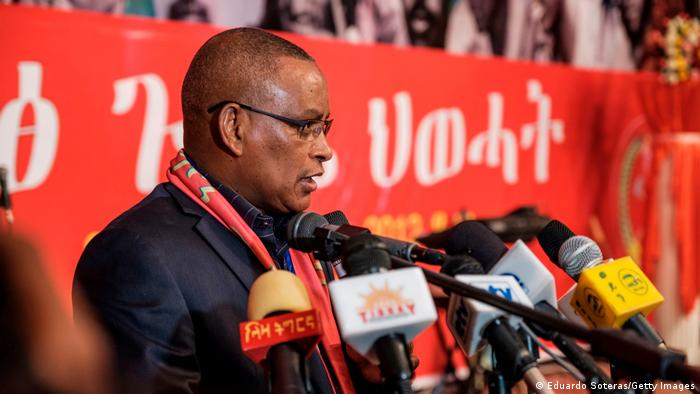
TPLF leader Debretsion Gebremichael
"Asmara has been accused of allowing the Ethiopian Air Force to use its base in undertaking strikes," said Hassan Khannenje, from Nairobi-based think tank, The Horn Institute.
"And so, the TPLF sees Eritrea as a fair target because of its alliance or perceived alliance currently with Abiy Ahmed's government in Addis Ababa."
Tigrayan forces and leaders were instrumental in bringing peace and relative prosperity to Ethiopia as part of the Ethiopian People's Revolutionary Democratic Front (EPRDF) by removing the brutal Derg military regime from power in 1991.
However, under its rule, Eritrea seceded in 1993, and the 1998–2000 war between Ethiopia and Eritrea followed.
When Abiy Ahmed swept to power in 2018, he made it a priority to normalize relations and make peace with Eritrea — a feat that won him the Nobel Peace Prize in 2019.
The TPLF's resentment stems from a sense of being sidelined by Abiy's government when he formed a new coalition government — known as the Prosperity Party — which excluded the TPLF. Abiy's overtures to Eritrea are also seen as a betrayal.
Read more: Abiy Ahmed: Ethiopia's first Nobel laureate
Also complicating the Ethiopian government's conflict with the TPLF is the involvement of Ethiopia's northern neighbor, Eritrea, which borders Tigray.
Over the weekend, multiple rockets — fired from Ethiopia's Tigray region — hit the Eritrean capital, Asmara.
The TPLF's leader, Debretsion Gebremichael, said his troops fought Eritrean forces "on several fronts" for the past few days. He accused Eritrea of providing military support to the Ethiopian government and sending troops across the border, allegations that Eritrea denied.

TPLF leader Debretsion Gebremichael
"Asmara has been accused of allowing the Ethiopian Air Force to use its base in undertaking strikes," said Hassan Khannenje, from Nairobi-based think tank, The Horn Institute.
"And so, the TPLF sees Eritrea as a fair target because of its alliance or perceived alliance currently with Abiy Ahmed's government in Addis Ababa."
Tigrayan forces and leaders were instrumental in bringing peace and relative prosperity to Ethiopia as part of the Ethiopian People's Revolutionary Democratic Front (EPRDF) by removing the brutal Derg military regime from power in 1991.
However, under its rule, Eritrea seceded in 1993, and the 1998–2000 war between Ethiopia and Eritrea followed.
When Abiy Ahmed swept to power in 2018, he made it a priority to normalize relations and make peace with Eritrea — a feat that won him the Nobel Peace Prize in 2019.
The TPLF's resentment stems from a sense of being sidelined by Abiy's government when he formed a new coalition government — known as the Prosperity Party — which excluded the TPLF. Abiy's overtures to Eritrea are also seen as a betrayal.
Read more: Abiy Ahmed: Ethiopia's first Nobel laureate

Thousands marched against a war in Ethiopia's Tigray region
'No more brother wars'
But many Eritreans want peace between Eritrea and Ethiopia.
Over the weekend, hundreds of Eritrean refugees in the Tigray city of Mekelle protested against the war between Tigrayan and Ethiopian government forces.
They demanded both sides end the conflict immediately and strike up dialogue.
The demonstrators also demanded a solution for the growing refugee crisis, saying military violence threatened refugee camps in western Tigray.
"The war is unnecessary. We know war. It's destructive. War between brothers is the worst. People have been persecuted and killed. The Eritreans here are against the war. It's enough!" said one male demonstrator.

Protests against the war have started in Tigray
"It's very sad that people speaking the same language and sharing the same language are fighting," another protester told DW on condition of anonymity.
Others fear Eritreans living in Tigray could also become targets.
"Since we've been in Ethiopia, especially Tigray, we have found shelter and live like every other citizen," a protestor told DW. "This war doesn't just affect civilian life, it also affects us, the refugees."
Regional rivals launch military exercise
Perhaps worryingly from an Ethiopian perspective, and further complicating matters, regional rivals Sudan and Egypt started joint military exercises over the weekend.
Both countries are in dispute with Ethiopia, over its Grand Renaissance Dam on the Blue Nile.
Sudan and Egypt both claim the structure will adversely affect their water supply.
The exercises include planning and running combat activities, as well as commando groups conducting search and rescue missions, according to an Egyptian defense ministry statement.
AUDIOS AND VIDEOS ON THE TOPIC

Ethiopia's Tigray conflict: What's behind the fighting?
Issued on: 17/11/2020 -
By:Eve IRVINE
In recent weeks, the northern Tigray region of Ethiopia has become a bloody battlefield. Nobel Peace Prize-winning Prime Minister Abiy Ahmed has launched a military offensive in the region, accusing the Tigray ruling party of trying to destabilise the democracy he wanted to build. Already, the fighting has forced more than 20,000 people to flee their homes for neighbouring Sudan. Adem Abebe, an advisor and commentator on the African Union, gives us his perspective on the situation and on the danger of it spreading beyond Ethiopia's borders and destabilising the wider region.
Peace was swift in Ethiopia under Abiy.
But for some, it was hard to miss a warning amid his calls for unity in Ethiopia, where some ethnic groups have pushed hard for more autonomy, sometimes with violence.
Speaking specifically to his countrymen from the Nobel lectern, Abiy said: “The evangelists of hate and division are wreaking havoc in our society using social media. They are preaching the gospel of revenge and retribution.”
He added that Ethiopia and Eritrea made peace because they were the “victims of a common enemy,” which was poverty.
But now Tigray regional leaders assert that Ethiopia and Eritrea have instead found a common enemy in them.
Terrible accounts have begun to emerge from shaken refugees. “These people are coming with knives and sticks, wanting to attack citizens. And behind them is the Ethiopian army with tanks,” said one refugee, Thimon Abrah. “And we’re here, waiting, for any sort of solution.”
Abiy on Monday said his government would welcome, protect and reintegrate those who have fled. But those fleeing are wary of any promises from his government, which they say attacked them. The government has repeatedly denied that.
For Ethiopians at home and in the diaspora, there is anger, sadness and suspicion as the United Nations warns of alarming rhetoric and the targeting of ethnic groups.
Abiy has vowed to limit the conflict to combatants. But he also rejects compromise, promising that the fighting will only end once the region’s leaders from the Tigray People’s Liberation Front are arrested and their arsenal destroyed.
“Abiy overreached,” Tsedale Lemma, the editor of the Addis Standard newspaper, wrote last week in The New York Times, calling the prime minister’s sidelining of the region’s leadership his first “cardinal mistake.”
But the official overseeing the new state of emergency in Tigray defended the prime minister’s unyielding stance.
“He faces the very threat to his own nation,” Redwan Hussein told reporters late last week. “The only thing he has to do is to defend it. So if there is a second Nobel Peace Prize, then he has to win it again because he is still salvaging his country.”
War was, too.
By CARA ANNA

1 of 11 PHOTOS
FILE - In this Sunday, Feb. 9, 2020, file photo, Ethiopia's Prime Minister Abiy Ahmed, center, arrives for the opening session of the 33rd African Union (AU) Summit at the AU headquarters in Addis Ababa, Ethiopia. Ahmed left Ethiopians breathless when he became the prime minister in 2018, introducing a wave of political reforms in the long-repressive country and announcing a shocking peace with enemy Eritrea. Now, Abiy is waging war in the defiant Tigray region.
By CARA ANNA

1 of 11 PHOTOS
FILE - In this Sunday, Feb. 9, 2020, file photo, Ethiopia's Prime Minister Abiy Ahmed, center, arrives for the opening session of the 33rd African Union (AU) Summit at the AU headquarters in Addis Ababa, Ethiopia. Ahmed left Ethiopians breathless when he became the prime minister in 2018, introducing a wave of political reforms in the long-repressive country and announcing a shocking peace with enemy Eritrea. Now, Abiy is waging war in the defiant Tigray region.
(AP Photo/File)
NAIROBI, Kenya (AP) — Abiy Ahmed left Ethiopians breathless when he became the prime minister in 2018, introducing a wave of political reforms in the long-repressive country and announcing a shocking peace with enemy Eritrea.
The young prime minister was cheered as he toured Ethiopia in his feverish first days, including when he visited the powerful Tigray region, whose leaders had dominated the national ruling coalition for decades. The international community, dazzled, showered Abiy with praise. Not even two years after taking power, he was awarded the Nobel Peace Prize.
Now — a year later — Abiy is waging war in Tigray, accusing its forces of a deadly attack on a military base after what he said was a series of provocations. His shine is threatening to wear off as his country’s long-brewing troubles explode onto the world stage, and he rejects international pressure for dialogue.
Abiy contends there’s no one to talk to, asserting that the Tigray regional leaders are criminals who recently held an election his government called illegal and that their actions have threatened Ethiopia’s sovereignty.
Well over 25,000 refugees have fled the fighting into Sudan, bringing word of vicious attacks by armed forces and even rival ethnic groups.
Abiy on Tuesday vowed a “final and crucial” military offensive as he tries to hold together a nation of 110 million people with scores of ethnic groups, some of which might try to defy him as the Tigray leaders have.
“If Tigray is not solved somehow, I don’t think the situation of the country will be solved,” Mekonnen Gebreslasie Gebrehiwot, who leads an association of ethnic Tigrayans, told The Associated Press from his home in Belgium.
On Tuesday, the Nobel committee said in a statement that it is “deeply concerned” about the situation in Ethiopia, and it called for all parties involved to “end the escalating violence.” The United States, the African Union, Pope Francis and the United Nations secretary-general all have expressed their deep concern and urged a peaceful resolution.
But there is no clear path back to peace in a region that’s seen little of it. “This conflict dashes our hopes for the region,” prominent Horn of Africa citizens wrote in a letter circulated late last week.
For much of the world, Abiy’s transformation from peacemaker to war-wager was as swift as his rise to power.
But for months, human rights groups had warned that Abiy’s administration was beginning to embrace the repressive ways of the past, including locking up critics and shutting off the internet.
Even as the Nobel committee awarded Abiy last year, it defended its choice. “No doubt some people will think this year’s prize is being awarded too early,” it said, noting “troubling examples” of ethnic violence. But it believed “it is now that Abiy Ahmed’s efforts deserve recognition and need encouragement.”
For many, Abiy represented a welcome break from the past when he rose to power in one of Africa’s most powerful countries, a key U.S. security ally in the strategic Horn of Africa.
His government welcomed opposition figures home from exile, and released others from prison, including some who had been sentenced to death. He swept through the region, brokering peace, and toured the United States to excited diaspora crowds.
He was seen by many as a unifier, the son of a Christian and Muslim and of mixed ethnic heritage. He surprised Ethiopians by apologizing for the government’s past abuses. He appeared to be drawing from his painful past.
In his Nobel address, the former soldier recalled his fighting experience on the Eritrean border two decades ago. “War is the epitome of hell for all involved,” he said.
NAIROBI, Kenya (AP) — Abiy Ahmed left Ethiopians breathless when he became the prime minister in 2018, introducing a wave of political reforms in the long-repressive country and announcing a shocking peace with enemy Eritrea.
The young prime minister was cheered as he toured Ethiopia in his feverish first days, including when he visited the powerful Tigray region, whose leaders had dominated the national ruling coalition for decades. The international community, dazzled, showered Abiy with praise. Not even two years after taking power, he was awarded the Nobel Peace Prize.
Now — a year later — Abiy is waging war in Tigray, accusing its forces of a deadly attack on a military base after what he said was a series of provocations. His shine is threatening to wear off as his country’s long-brewing troubles explode onto the world stage, and he rejects international pressure for dialogue.
Abiy contends there’s no one to talk to, asserting that the Tigray regional leaders are criminals who recently held an election his government called illegal and that their actions have threatened Ethiopia’s sovereignty.
Well over 25,000 refugees have fled the fighting into Sudan, bringing word of vicious attacks by armed forces and even rival ethnic groups.
Abiy on Tuesday vowed a “final and crucial” military offensive as he tries to hold together a nation of 110 million people with scores of ethnic groups, some of which might try to defy him as the Tigray leaders have.
“If Tigray is not solved somehow, I don’t think the situation of the country will be solved,” Mekonnen Gebreslasie Gebrehiwot, who leads an association of ethnic Tigrayans, told The Associated Press from his home in Belgium.
On Tuesday, the Nobel committee said in a statement that it is “deeply concerned” about the situation in Ethiopia, and it called for all parties involved to “end the escalating violence.” The United States, the African Union, Pope Francis and the United Nations secretary-general all have expressed their deep concern and urged a peaceful resolution.
But there is no clear path back to peace in a region that’s seen little of it. “This conflict dashes our hopes for the region,” prominent Horn of Africa citizens wrote in a letter circulated late last week.
For much of the world, Abiy’s transformation from peacemaker to war-wager was as swift as his rise to power.
But for months, human rights groups had warned that Abiy’s administration was beginning to embrace the repressive ways of the past, including locking up critics and shutting off the internet.
Even as the Nobel committee awarded Abiy last year, it defended its choice. “No doubt some people will think this year’s prize is being awarded too early,” it said, noting “troubling examples” of ethnic violence. But it believed “it is now that Abiy Ahmed’s efforts deserve recognition and need encouragement.”
For many, Abiy represented a welcome break from the past when he rose to power in one of Africa’s most powerful countries, a key U.S. security ally in the strategic Horn of Africa.
His government welcomed opposition figures home from exile, and released others from prison, including some who had been sentenced to death. He swept through the region, brokering peace, and toured the United States to excited diaspora crowds.
He was seen by many as a unifier, the son of a Christian and Muslim and of mixed ethnic heritage. He surprised Ethiopians by apologizing for the government’s past abuses. He appeared to be drawing from his painful past.
In his Nobel address, the former soldier recalled his fighting experience on the Eritrean border two decades ago. “War is the epitome of hell for all involved,” he said.
But for some, it was hard to miss a warning amid his calls for unity in Ethiopia, where some ethnic groups have pushed hard for more autonomy, sometimes with violence.
Speaking specifically to his countrymen from the Nobel lectern, Abiy said: “The evangelists of hate and division are wreaking havoc in our society using social media. They are preaching the gospel of revenge and retribution.”
He added that Ethiopia and Eritrea made peace because they were the “victims of a common enemy,” which was poverty.
But now Tigray regional leaders assert that Ethiopia and Eritrea have instead found a common enemy in them.
Terrible accounts have begun to emerge from shaken refugees. “These people are coming with knives and sticks, wanting to attack citizens. And behind them is the Ethiopian army with tanks,” said one refugee, Thimon Abrah. “And we’re here, waiting, for any sort of solution.”
Abiy on Monday said his government would welcome, protect and reintegrate those who have fled. But those fleeing are wary of any promises from his government, which they say attacked them. The government has repeatedly denied that.
For Ethiopians at home and in the diaspora, there is anger, sadness and suspicion as the United Nations warns of alarming rhetoric and the targeting of ethnic groups.
Abiy has vowed to limit the conflict to combatants. But he also rejects compromise, promising that the fighting will only end once the region’s leaders from the Tigray People’s Liberation Front are arrested and their arsenal destroyed.
“Abiy overreached,” Tsedale Lemma, the editor of the Addis Standard newspaper, wrote last week in The New York Times, calling the prime minister’s sidelining of the region’s leadership his first “cardinal mistake.”
But the official overseeing the new state of emergency in Tigray defended the prime minister’s unyielding stance.
“He faces the very threat to his own nation,” Redwan Hussein told reporters late last week. “The only thing he has to do is to defend it. So if there is a second Nobel Peace Prize, then he has to win it again because he is still salvaging his country.”
Ethiopia: African leaders seek mediation as conflict escalates
African leaders are trying to alleviate tensions in Tigray as Ethiopia said it had seized another town. But Addis Ababa said mediation was a long way off and denied suggestions it had targeted civilian locations.
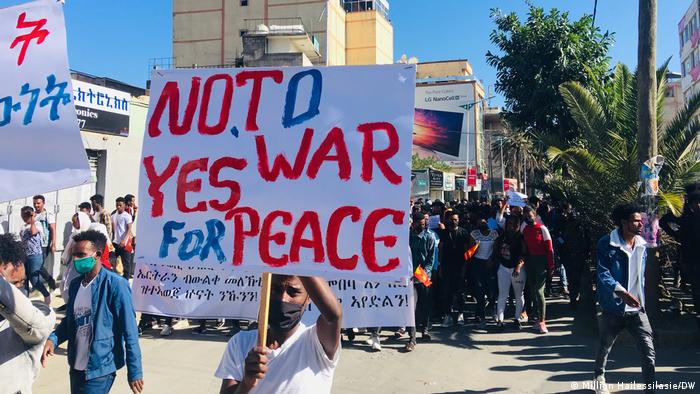
Leaders from across Africa attempted Monday to initiate some form of reconciliation in Ethiopia's escalating internal conflict, two days after rocket strikes on Eritrea's capital.
Ugandan President Yoweri Museveni held talks with Ethiopia's Deputy Prime Minister Demeke Mekonnen in Gulu, northern Uganda. He said discussions "focused on the peace and security issues affecting Ethiopia currently. Being one of the oldest countries that was not colonized in Africa, Ethiopia is the pride of the continent."
Former Nigerian President Olusegun Obasanjo on Monday left for the Ethiopian capital of Addis Ababa to mediate in the crisis, his spokesman said.
Watch video 01:42 Ethiopia crisis: Tigray missiles target Eritrean capital
What is the background to the conflict?
Ethiopian Prime Minister Abiy Ahmed declared on November 4 he had ordered military operations in its northern Tigray region in a dramatic escalation of a long-running feud with the local ruling party, the Tigray People's Liberation Front (TPLF).
On Monday, Ethiopia said it had captured another town. Defense Minister Dr Kenna Yadeta told DW: "All their [TPLF's] actions testify to their high level of frustration. They have no more strength, capability and time to intensify wars in the region."
He also accused the TPLF of giving out misinformation. "They claimed to have shot down air force jets, and to have won over about ten thousand government forces. It turned out a lie, as they were known to lie during their rule over the past 27 years."
"We [the Government of Ethiopia] can achieve a crushing victory any day from now," he concluded.
Meanwhile, TPLF leader Debretsion Gebremichael called on the United Nations and African Union to condemn Ethiopia's troops, accusing them of using of high-tech weaponry, such as drones, to carry out attacks.
Hundreds of people are reported to have been killed so far in the conflict, some in atrocities as documented last week by Amnesty International.
More than 25,000 Ethiopians have fled into neighboring Sudan as a result of the conflict, according to Sudanese officials.
The conflict could jeopardize the recent opening up of Ethiopia's economy, antagonize ethnic tensions elsewhere, and tarnish the reputation of Prime Minister Abiy who only last year won a Nobel Peace Prize for a peace pact with Eritrea.
jsi/rt (AFP, Reuters)
African leaders are trying to alleviate tensions in Tigray as Ethiopia said it had seized another town. But Addis Ababa said mediation was a long way off and denied suggestions it had targeted civilian locations.

Leaders from across Africa attempted Monday to initiate some form of reconciliation in Ethiopia's escalating internal conflict, two days after rocket strikes on Eritrea's capital.
Ugandan President Yoweri Museveni held talks with Ethiopia's Deputy Prime Minister Demeke Mekonnen in Gulu, northern Uganda. He said discussions "focused on the peace and security issues affecting Ethiopia currently. Being one of the oldest countries that was not colonized in Africa, Ethiopia is the pride of the continent."
Former Nigerian President Olusegun Obasanjo on Monday left for the Ethiopian capital of Addis Ababa to mediate in the crisis, his spokesman said.
Watch video 01:42 Ethiopia crisis: Tigray missiles target Eritrean capital
What is the background to the conflict?
Ethiopian Prime Minister Abiy Ahmed declared on November 4 he had ordered military operations in its northern Tigray region in a dramatic escalation of a long-running feud with the local ruling party, the Tigray People's Liberation Front (TPLF).
On Monday, Ethiopia said it had captured another town. Defense Minister Dr Kenna Yadeta told DW: "All their [TPLF's] actions testify to their high level of frustration. They have no more strength, capability and time to intensify wars in the region."
He also accused the TPLF of giving out misinformation. "They claimed to have shot down air force jets, and to have won over about ten thousand government forces. It turned out a lie, as they were known to lie during their rule over the past 27 years."
"We [the Government of Ethiopia] can achieve a crushing victory any day from now," he concluded.
Meanwhile, TPLF leader Debretsion Gebremichael called on the United Nations and African Union to condemn Ethiopia's troops, accusing them of using of high-tech weaponry, such as drones, to carry out attacks.
Hundreds of people are reported to have been killed so far in the conflict, some in atrocities as documented last week by Amnesty International.
More than 25,000 Ethiopians have fled into neighboring Sudan as a result of the conflict, according to Sudanese officials.
The conflict could jeopardize the recent opening up of Ethiopia's economy, antagonize ethnic tensions elsewhere, and tarnish the reputation of Prime Minister Abiy who only last year won a Nobel Peace Prize for a peace pact with Eritrea.
jsi/rt (AFP, Reuters)
Ethiopia's Abiy vows 'final' phase in Tigray conflict
Ethiopia's prime minister has said government troops will launch a major offensive in the Tigray region after a surrender deadline elapsed. His remarks came after the army carried out airstrikes on the regional capital
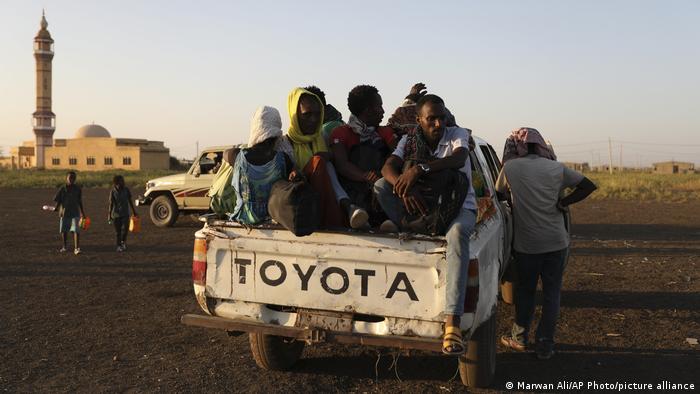
Ethiopian government troops will soon launch a "final and crucial" offensive in the country's northern Tigray region after security forces there failed to respond to a deadline to surrender, Ethiopian Prime Minister Abiy Ahmed said on Tuesday.
"The three-day deadline given for Tigray special forces and the greedy junta to surrender themselves has expired today," Abiy said in a statement. "Now the deadline has expired so that the final and crucial law enforcement operation will be conducted in the coming days," he added.
Fighting between the Addis Ababa administration and the Tigray region began in early November after Abiy ordered soldiers to put down an uprising by the region's ruling political party, the Tigray People's Liberation Front (TPLF). The party is now classed as a rebel group by the government.
Ethiopia aim to end the final operation within seven days, Ethiopian Defense Minister Kenea Yadeta told DW. He said the operation will end once the TPLF is "under control" and "willing to surrender."
"It is not a matter of victory, but a matter of ensuring the rule of law and bringing this group to the court of law," Yadeta said in an interview with DW News.
Read more: The dangers behind Ethiopia's Tigray conflict
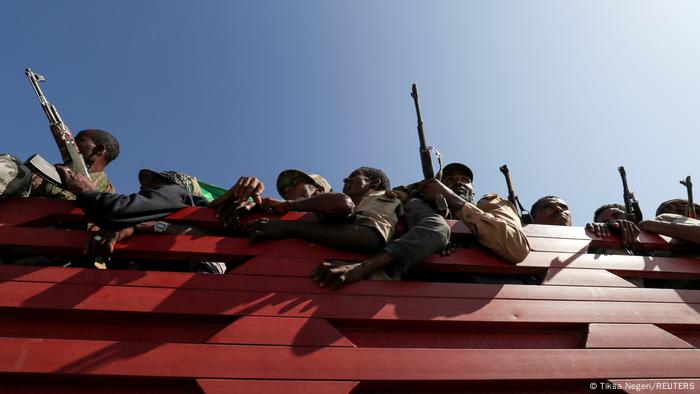
TPLF forces have fired rockets at airports in Ethiopia's Amhara region and the Eritrean capital
Long-running tensions
Since taking office in 2018, Abiy — who won the Nobel Peace Prize in 2019 for his work to improve relations with neighboring Eritrea — has been at loggerheads with the TPLF, which dominated Ethiopian politics for a long time. Among other things, he has purged Tigray elites from government and state institutions amid differences fueled by ethnic tensions.
In particular, the Ethiopian government was angered after the TPLF held a local election in September in defiance of Addis Ababa. In its turn, the regional government in Tigray considers the federal government illegal, saying its mandate has expired after national elections were postponed until next year because of the COVID-19 pandemic.
The ongoing conflict has already resulted in the massacre of "scores, and likely hundreds" of civilians in Tigray, according to rights group Amnesty International. Some 25,000 have fled to Sudan.
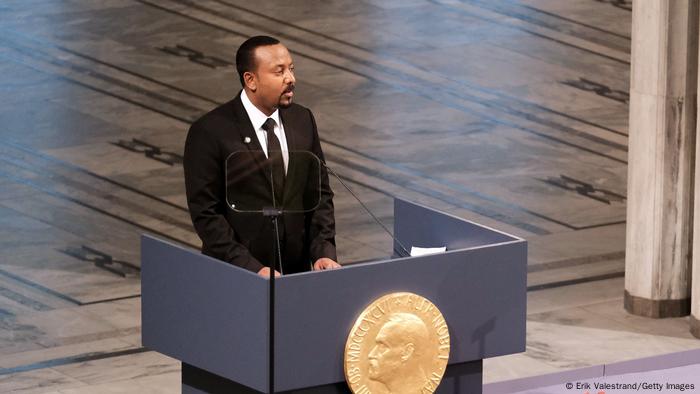
Abiy won the 2019 Nobel Peace Prize — but the Nobel Committee has said it is now 'deeply concerned'
'Surgical' strikes
Abiy's remarks come after the Ethiopian army on Monday carried out fresh airstrikes on the regional capital of Mekele. A government statement on Tuesday said "precision-led and surgical air operations" had targeted "specific critical TPLF targets."
Ethiopia has denied reports of there being civilian casualties.
The UN has warned that the conflict could "spiral totally out of control" with disastrous consequences for the Horn of Africa.
The Ethiopian government has thus far been unwilling to accept external mediation. Defense Minister Yadeta insisted that the conflict in Tigray is "an internal affair."
"It doesn't need external institutions to intervene in Ethiopian sovereignty," Yadeta told DW.
The TPLF has accused Ethiopia of enlisting Eritrean soldiers to help in the conflict, which Ethiopia also denies.
Abiy has so far rejected all appeals by the international community to resolve the conflict with dialogue.
Watch video
Thousands flee violence in northern Ethiopia
tj/msh (AFP, Reuters)
Ethiopia's prime minister has said government troops will launch a major offensive in the Tigray region after a surrender deadline elapsed. His remarks came after the army carried out airstrikes on the regional capital

Ethiopian government troops will soon launch a "final and crucial" offensive in the country's northern Tigray region after security forces there failed to respond to a deadline to surrender, Ethiopian Prime Minister Abiy Ahmed said on Tuesday.
"The three-day deadline given for Tigray special forces and the greedy junta to surrender themselves has expired today," Abiy said in a statement. "Now the deadline has expired so that the final and crucial law enforcement operation will be conducted in the coming days," he added.
Fighting between the Addis Ababa administration and the Tigray region began in early November after Abiy ordered soldiers to put down an uprising by the region's ruling political party, the Tigray People's Liberation Front (TPLF). The party is now classed as a rebel group by the government.
Ethiopia aim to end the final operation within seven days, Ethiopian Defense Minister Kenea Yadeta told DW. He said the operation will end once the TPLF is "under control" and "willing to surrender."
"It is not a matter of victory, but a matter of ensuring the rule of law and bringing this group to the court of law," Yadeta said in an interview with DW News.
Read more: The dangers behind Ethiopia's Tigray conflict

TPLF forces have fired rockets at airports in Ethiopia's Amhara region and the Eritrean capital
Long-running tensions
Since taking office in 2018, Abiy — who won the Nobel Peace Prize in 2019 for his work to improve relations with neighboring Eritrea — has been at loggerheads with the TPLF, which dominated Ethiopian politics for a long time. Among other things, he has purged Tigray elites from government and state institutions amid differences fueled by ethnic tensions.
In particular, the Ethiopian government was angered after the TPLF held a local election in September in defiance of Addis Ababa. In its turn, the regional government in Tigray considers the federal government illegal, saying its mandate has expired after national elections were postponed until next year because of the COVID-19 pandemic.
The ongoing conflict has already resulted in the massacre of "scores, and likely hundreds" of civilians in Tigray, according to rights group Amnesty International. Some 25,000 have fled to Sudan.

Abiy won the 2019 Nobel Peace Prize — but the Nobel Committee has said it is now 'deeply concerned'
'Surgical' strikes
Abiy's remarks come after the Ethiopian army on Monday carried out fresh airstrikes on the regional capital of Mekele. A government statement on Tuesday said "precision-led and surgical air operations" had targeted "specific critical TPLF targets."
Ethiopia has denied reports of there being civilian casualties.
The UN has warned that the conflict could "spiral totally out of control" with disastrous consequences for the Horn of Africa.
The Ethiopian government has thus far been unwilling to accept external mediation. Defense Minister Yadeta insisted that the conflict in Tigray is "an internal affair."
"It doesn't need external institutions to intervene in Ethiopian sovereignty," Yadeta told DW.
The TPLF has accused Ethiopia of enlisting Eritrean soldiers to help in the conflict, which Ethiopia also denies.
Abiy has so far rejected all appeals by the international community to resolve the conflict with dialogue.
Watch video
Thousands flee violence in northern Ethiopia
tj/msh (AFP, Reuters)







